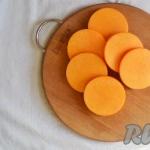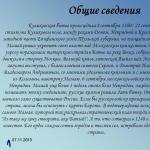A. Saponenko U. Saponenko
The transformation of wool into yarn consists of the following operations: washing, drying, combing, spinning, twisting.
Wash
Initially, the sheep's wool must be washed, since a lot of dirt accumulates in it during the time the animal spends grazing and in the barn.
It is not forbidden to wash the wool after shearing, but it is better to wash an unshorn sheep with soap (in this case it will be easier to process the wool in the future). Wash the sheep with warm water in a bath or trough. They don't skimp on soap. If the wool is very dirty, change the water several times. Finish bathing with rinsing. This procedure is carried out on a warm sunny day so that the sheep does not catch a cold. Afterwards, the animal is thoroughly dried and allowed to dry. Then they start cutting. If the sheep was not bathed before, the wool must be washed with laundry soap after finishing the work, preferably after soaking it first. During the washing process, the water has to be changed frequently, so wool may “leak” along with the drained liquid. To prevent this from happening, “throw” the wool into a sieve or willow basket. Finally, rinse the wool, let the water drain and dry.
Drying
It is necessary to dry the wool well. In summer this is done in the sun, and in winter on a stove or steam heating radiators.
Combing
Combing is necessary so that the wool becomes uniform, without clumps, then it will be easier to spin and the yarn will become of higher quality, and they comb it immediately after drying, since wool absorbs moisture well.

For combing, two basket brushes are used, each of which is a board equipped with a handle and metal teeth curved towards the handle (Fig. 1). Take wool (about a handful), distribute it evenly over the entire toothed surface of the brush and comb it while sitting, placing the basket with wool on your knee with the teeth up, moving the other brush as shown in Fig. 2. Remove the wool from the brushes as follows. The brushes are turned so that their handles are one above the other (Fig. 3) and the wool is “combed” with the upper brush from the lower one.
Spinning
Spinning is the process of forming thread from wool. This is done using a spindle (Fig. 4), a spinning wheel with foot driven or electric spinning wheels.
The spindle spinning method is the most difficult to perform. And it’s good if, in addition to the spindle, the grandmother’s house also preserved a comb on a leg (for yarn). The wool is attached to the comb at the level of the head of a sitting person. Take the spindle in your right hand and begin to rotate it clockwise between the thumb and forefinger, while pinching off and feeding the wool onto the spindle, which will then be twisted into a thread.
Rice. 4. Spindle for spinning wool

Rice. 5. Spindle for twisting (twisting) threads

For convenience, you can hang the spindle on a thread 20...30 cm long. The thickness of the thread depends on the amount of wool plucked off - the more you pinch off, the thicker the thread will be. For greater strength, a bobbin thread is inserted into the yarn and the wool is wound around it.
When spinning on a spinning wheel, the work consists of uniformly feeding wool into the hole in the flyer.
Twisting (knotting) is the weaving of several threads together. This operation is performed again using a spindle or spinning wheel. Moreover, a special spindle is needed here (Fig. 5) and rotate it counterclockwise, holding it in right hand, and holding the thread with the left. On a self-spinning wheel, knotting is much easier: connect two threads, fasten them to a spool and “start” the self-spinning wheel into operation.
V. Cook
First of all, the sheared wool must be sorted into clean (without burrs, foreign debris and dirt), clogged and contaminated. Wool in need of cleaning is sorted, removing impurities, mats and other “substandard” materials manually.
Wool shorn from a sheep is washed in an enamel basin in warm water 30...35 °C (without soap, otherwise it will dry out), and washed in several waters. The wool is not rubbed, but only squeezed out with your hands, slowly going through layer by layer. No detergents chemicals cannot be used! The most convenient way to squeeze out wool during final rinsing is in a centrifuge. washing machine. Dry it indoors, spreading it in a thin layer on a cloth or tarpaulin.
The washed and dried wool is plucked and combed using a long-toothed metal comb.
It is good to comb the wool with the same basket brushes that are used in wool spinning factories to clean the rollers and drums of carding machines. The brush is a small rectangular board (block) with a handle.
The board is covered with rubberized fabric with wire hooks.

Rice. 1.
Electric spinning wheel assembly:
1 — “spinning” drive; 4 — starting unit; 3 - intermediate rheostat;
2 - main drive; 5 - engine

Rice. 2.
"Spinning" unit:
a - spindle;
b - flyer;
c - coil
When spinning, the combed wool is collected into bundles and tied to a convenient rack, from where the wool can be easily plucked in the required portion and threaded.
In the Moscow region 10 years ago it was possible to purchase electric spinning wheels in Svet stores. But these spinning wheels, to the shame of the designers, were only suitable for joining and twisting yarn, as well as for decorating shop windows.
Therefore, to spin sheep wool, rabbit and dog fluff, I had to invent my own electric spinning wheel, which I offer to readers.
The spinning wheel (Fig. 1) consists of a base made of 10 mm plywood, on which an electric motor (from a sewing machine), intermediate and main drives and a spinning unit (spindle with flyer and reel) are mounted. The motor is connected to the network through a rheostat, which makes it possible to smoothly regulate the rotation speed of the spinning unit. Between the engine and the intermediate drive, as between the intermediate and main drives, rotation is transmitted by V-belts, and from the main drive to the reel and spindle - by a belt made of twisted linen thread. Nylon thread is also suitable, but it breaks more often. The thread is stretched with a cross for spinning, and for twisting the threads - by crossing the threads in a horizontal plane. The belt tension is produced by shifting the spindle. When making a spindle, flyer and reel, adhere to the dimensions shown in Fig. 2.
Sometimes dry wool does not spin well, then it needs to be combed again, lightly lubricating it with sewing machine oil. (The oil is applied with a feather.)
Before dyeing, in order to obtain an even, shiny tone, the yarn is thoroughly washed - otherwise the paint will lie unevenly. But first, the yarn intended for dyeing is spun into threads of the thickness that will be required for further knitting work. Then the resulting threads are wound (100 g each, no more) like a lasso, which is loosely tied with woolen threads in four to six places in a circle.
To wash 1 kg of yarn you will need one piece laundry soap. Washing powder It's better not to use it. For some reason it changes the structure of the coat and it becomes brittle. Finely chopped or planed soap is diluted in warm water until foamy. All pieces of it should dissolve. The threads are washed by lightly squeezing and stirring, but without twisting. You shouldn’t rub it sharply, squeeze it hard, or twist it too hard—the threads will flatten and lose their fluffiness. The water is changed several times during the “washing” process, dissolving new portions of soap.
If the threads retain a grayish tint even after washing, then they are bleached before dyeing, otherwise the acquired color will not be pure and bright. To do this, the skeins are gently boiled in the solution for 20...30 minutes. baby soap, and make sure that the water completely covers the yarn. After washing and boiling, the threads are rinsed in warm water so that the soap comes off completely. Wash and dye the threads in an enamel container.
P.S. Woolen items are indispensable in our cold weather. And to make the room warm and cozy, you can choose excellent inexpensive carpets and hang them over the bed, as our grandmothers did; now it’s fashionable and practical.
Humanity has long learned to use the fur of domestic animals for its needs. The animals were shorn, the wool was prepared, and then things were knitted from the yarn and fabric was made. Unlike today, where everything is made using special equipment except shearing, our ancestors made yarn by hand.
The process was quite long and laborious. To process the sheared fur into finished thread, a lot of time was spent at the spinning wheel. It is not for nothing that in Russian fairy tales, girls and women are constantly described as sitting at this device.
The coat is heterogeneous and consists of down, soft and guard hairs. If the awns are not separated, the final product made from such raw materials will be prickly and unpleasant. Therefore, in order to avoid manual sorting, they first carry out “combing”, obtaining the most delicate downy tow material. This is exactly what weightless Orenburg scarves are made from. Later, when cutting, I grab a little more than half the length of the hair.

This material is also quite soft, easy to process and forms the basis for simple yarn. It was combed, getting rid of various natural debris. Sometimes before spinning the raw material was soaked to give it softer properties, followed by drying in the sun. The wool remaining after the final shearing is either combed to remove guard hairs, followed by soaking and drying, or left untreated on coarse material.
Spinning equipment
Before automation of the process, only two main tools were used: a spindle made of wood and a weight for a spinning wheel (whorl). Often at home they managed without it.
To simplify the process and make it more convenient, they used a board (spinning wheel) fixed at face level.

Manufacturing technology
- A small fur ball of tow was tied onto a spinning board.
- Carefully pulled out a small strand of wool, up to 5 centimeters wide and up to 10 centimeters long.
- I twisted it into a thread using a spindle until the thread begins to gather in rings.
- The finished piece was secured to the spinning wheel at one end.
- The next piece of fluff was connected to the free end and twisted with a spindle until rings were formed.
- Then the process continues the same way, gradually adding new portions of tow.
- Excess thread that interferes with work is wound on a spinning wheel.
When a fairly large amount is formed finished material, it is rolled into a ball and continued to be spun again. If the thread broke during the process, its ends were moistened, a little fluff was added and twisted again.

In order to get multi-colored, practical material A variety of natural dyes were used for future clothing that could be worn to work. As a rule, these were decoctions of plants that gave desired color, but sometimes mineral compounds, like ocher, were used.
After preparing the shorn wool, it was placed in a special vat with ready-made dye and boiled for some time. After drying, we carried out another combing to soften and untangle the tow. But most of all, the dazzling White color finished yarn.
As you can see, it was quite a long and painstaking work. But, having spent so much effort and so much time, our ancestors provided themselves not only with warm clothes for cold winters, but also with the most exquisite things that to this day amaze the whole world with their quality and originality of execution. It would be useful to recall Orenburg and Pavlovo Posad products, which have high value and demand in Western countries.
When choosing yarn, many craftswomen carefully study the labels and select the most environmentally friendly materials. Some people take almost “natural” synthetics, while others are willing to pay for pure wool. In any case, we rarely think about how yarn is made. And if everything is more or less clear with the factory process, then the fact that the best and most expensive yarn is still made by hand can be a revelation for many.
The art of processing animal hair has been known to mankind since ancient times, and over time the “manual” process has not undergone much change. But before considering the technology of spinning wool, let's figure out why it is needed and what types of spinning wool are. According to international certification standards, wool yarn is of two types - woolmark (natural wool) and pure new wool (pure natural wool). The difference is that the first type of wool allows the presence of other fibers in a volume not exceeding 7%. The second type comes without additives, taking into account an error of 0.3%.
Impurities are needed to reduce the cost of the final product and change the quality of the yarn. In addition, wool is used to make threads different types animals, and not all of them have the same texture.
The coat consists of guard hair and fluff. The guard hair is hard and prickly, and the yarn from it will turn out to be “itchy.” But down, on the contrary, is soft and delicate - the threads made from it are warm, light and do not irritate the skin. At production manufacturing the yarn is not combed out very well and almost always natural wool acrylic is added, so wool with impurities is sold in stores. When spinning by hand, only the best fibers are taken, and therefore only pure wool is obtained from the spinner.
Now let's look at the process hand made yarn. The first step is cutting the animals. Angora rabbits are not sheared - they are simply combed. Llamas, lambs and goats are shorn, but not always the entire length. The wool from Merino sheep is sheared only from the lower back - it is the most delicate and fluffy.
After this, the animal wool is collected, cleaned of small debris and sorted by fiber length. The spinners also tug and dry the wool before starting work - thus getting rid of residual debris and uninvited “tenants”. The material does not undergo any chemical treatment, because when sprayed with chemicals, all the healing properties of the yarn will be lost.
The finished fibers are combed out - special combs with curved bristles are used for combing, which make it possible to separate light fluff from the main hair fiber and remove the remaining guard hairs. To obtain one tow (this is a lump of fluff ready for spinning), you need to make three or four combs.
Once the tow is ready, you can begin making yarn. You can use a spinning wheel or twist the thread by hand. To knot - this is the name of the process of spinning wool - a thread by hand, you need to separate a small piece of fluff from the total mass, stretch it and felt it. To prevent the thread from breaking, it is enough to simply add new fibers in time.
Previously, spinning wheels were mechanical - combed wool was attached to a special holder on the teeth in a lump, a small flagellum was twisted from the lower end of the tow, which was slowly pulled down, and the resulting thread was wound on a spindle. Nowadays, electric spinning wheels are sold that can themselves draw out the thread, twist it and wind it around a peg - the spinner only needs to lay down the fluff and comb the wool with her fingers from time to time.
When choosing yarn, many craftswomen carefully study the labels and select the most environmentally friendly materials. Some people take almost “natural” synthetics, while others are willing to pay for pure wool. In any case, we rarely think about how yarn is made. And if everything is more or less clear with the factory process, then the fact that the best and most expensive yarn is still made by hand can be a revelation for many.
The art of processing animal hair has been known to mankind since ancient times, and over time the “manual” process has not undergone much change. But before considering the technology of spinning wool, let's figure out why it is needed and what types of spinning wool are. According to international certification standards, wool yarn is of two types - woolmark (natural wool) and pure new wool (pure natural wool). The difference is that the first type of wool allows the presence of other fibers in a volume not exceeding 7%. The second type comes without additives, taking into account an error of 0.3%.
Impurities are needed to reduce the cost of the final product and change the quality of the yarn. In addition, the wool of different types of animals is used to make threads, and not all of them have the same texture.
The coat consists of guard hair and fluff. The guard hair is hard and prickly, and the yarn from it will turn out to be “itchy.” But down, on the contrary, is soft and delicate - the threads made from it are warm, light and do not irritate the skin. During production, the yarn is not combed very well and acrylic is almost always added to natural wool, which is why wool with impurities is sold in stores. When spinning by hand, only the best fibers are taken, and therefore only pure wool is obtained from the spinner.
Now let's look at the process of hand-making yarn. The first step is cutting the animals. Angora rabbits are not sheared - they are simply combed. Llamas, lambs and goats are shorn, but not always the entire length. Merino sheep are sheared only from the lower back - it is the most delicate and fluffy.
After this, the animal wool is collected, cleaned of small debris and sorted by fiber length. The spinners also tug and dry the wool before starting work - thus getting rid of residual debris and uninvited “tenants”. The material does not undergo any chemical treatment, because when sprayed with chemicals, all the healing properties of the yarn will be lost.
The finished fibers are combed out - special combs with curved bristles are used for combing, which make it possible to separate light fluff from the main hair fiber and remove the remaining guard hairs. To obtain one tow (this is a lump of fluff ready for spinning), you need to make three or four combs.
Once the tow is ready, you can begin making yarn. You can use a spinning wheel or twist the thread by hand. To knot - this is the name of the process of spinning wool - a thread by hand, you need to separate a small piece of fluff from the total mass, stretch it and felt it. To prevent the thread from breaking, it is enough to simply add new fibers in time.
Previously, spinning wheels were mechanical - combed wool was attached to a special holder on the teeth in a lump, a small flagellum was twisted from the lower end of the tow, which was slowly pulled down, and the resulting thread was wound on a spindle. Nowadays, electric spinning wheels are sold that can themselves draw out the thread, twist it and wind it around a peg - the spinner only needs to lay down the fluff and comb the wool with her fingers from time to time.
How to make yarn?

If you have an animal at home with thick fluffy fur, you can make the knitting material yourself. These can be not only sheep or rabbits, which are the main supplier of wool for their owners. Excellent yarn can also be made from dog and even cat fluff.
Things knitted from dog or cat hair not only have excellent thermal insulation, but also healing properties. The techniques of hand spinning have undergone virtually no changes over the millennia of their existence. You can learn the basics and make yarn for the same socks in two weeks.
Adaptations
As before, only a spindle and a spindle (weight for a spinning wheel) are used for this task. At the same time, the whorl can be simplified. To make the process more convenient, it is worth making a special pendant for tow (combed fluff). It could be simple board, tied to a chair in such a way that the tow attached to it is at face level.
In the early stages of training, it is unlikely that you will be able to immediately control both the uniform pulling of fluff from the tow and the unwinding of the yarn. It is better to prepare a shallow enamel cup in which you can place the spinning wheel for rotation.
Spinning process
First of all, you should prepare the wool. For this:
- we go through it with our hands, throw out knots and garbage;
- We brush it with a special brush or a hard comb with a “massage” until it is fluffy.
Then you can begin the spinning itself. The yarn is made like this:
- tie a bunch of fluff (tow) onto a stand;
- carefully pull a strand out of it (about 4-5 centimeters wide and 8-10 centimeters long);
- twist the strand into a thread until it begins to gather into a ring;
- fix this end on the spinning wheel (in the upper part);
- pull out another strand;
- rotate the spinning wheel until a new piece of thread begins to gather into a ring;
- repeat steps 5-6 until a segment 50-60 centimeters long is formed;
- put the spinning wheel in a cup (this way it will not roll away when dropped);
- pull out another strand;
- rotate the spinning wheel, holding the thread in tension and evenly feeding the wool from the tow;
- Gradually wind the excess thread onto the spinning wheel.
After quite a lot of thread has been wound onto the spinning wheel, it is rewound into a ball and the spinning of a new one continues. If the thread breaks, moisten its ends, add a pinch of fluff to them and twist them.




